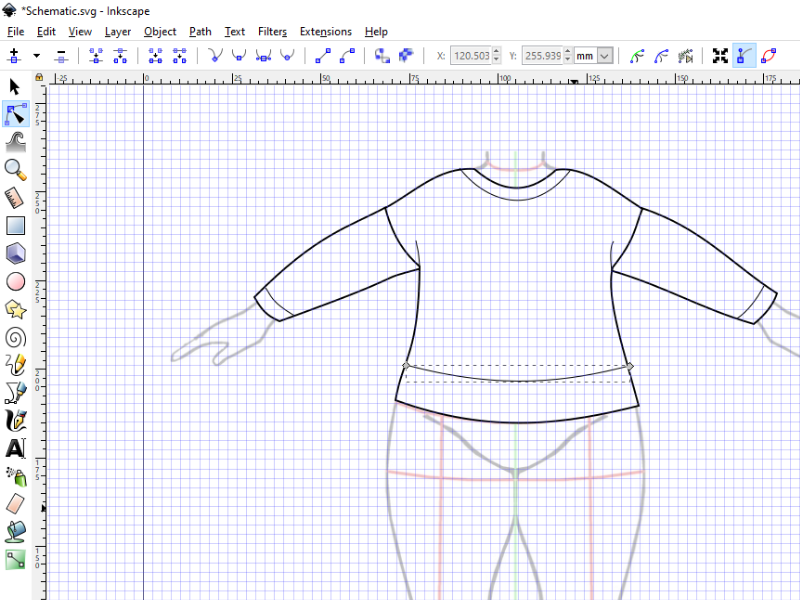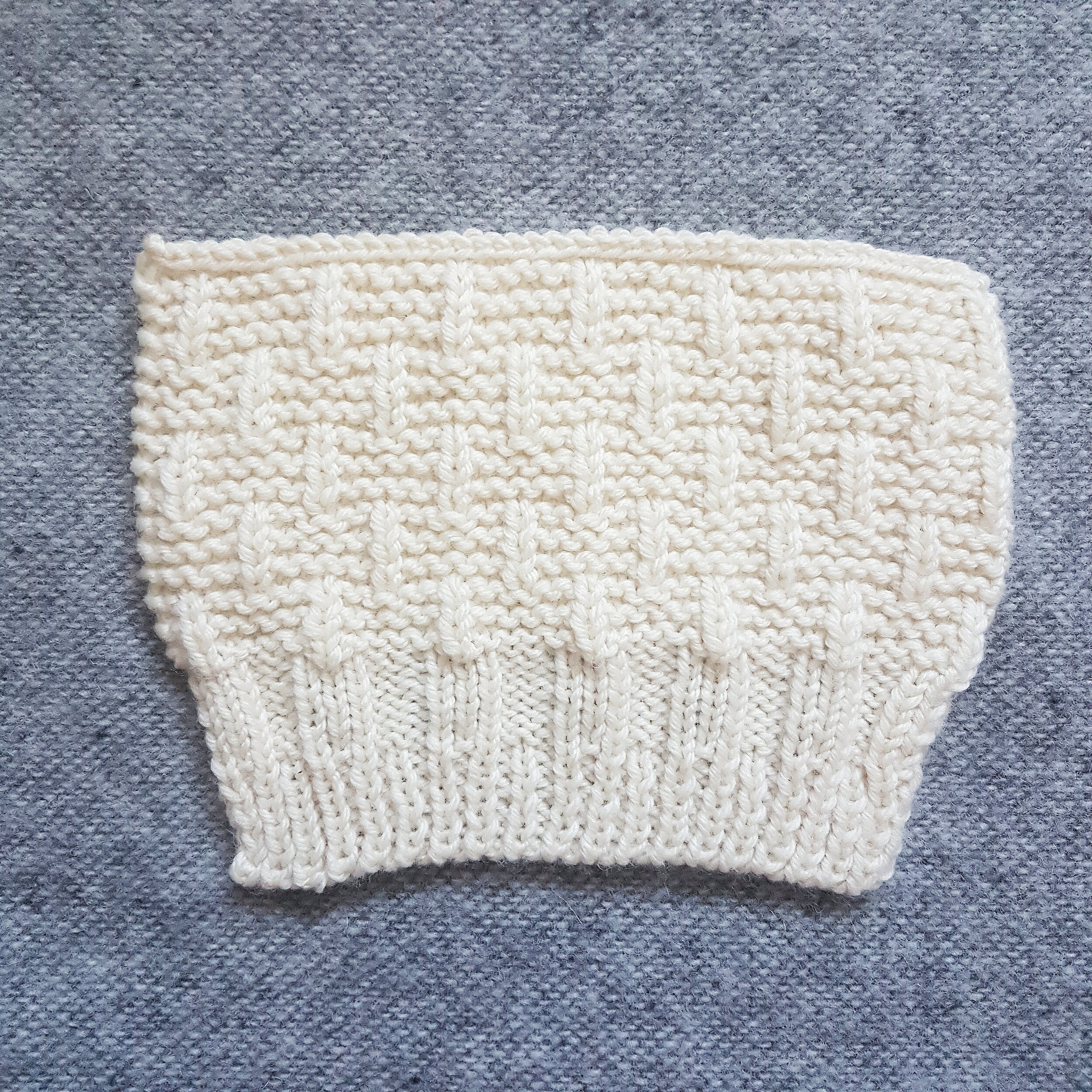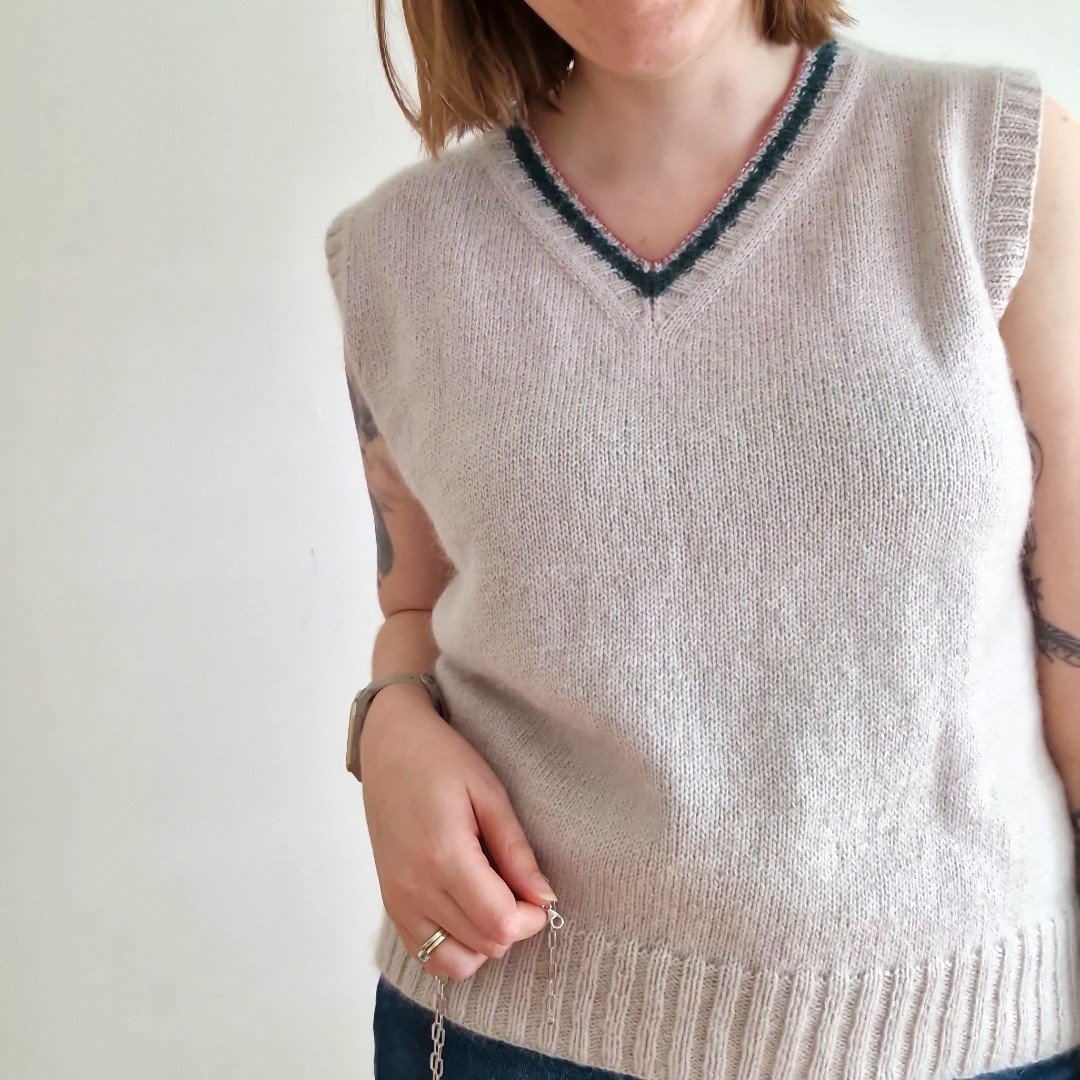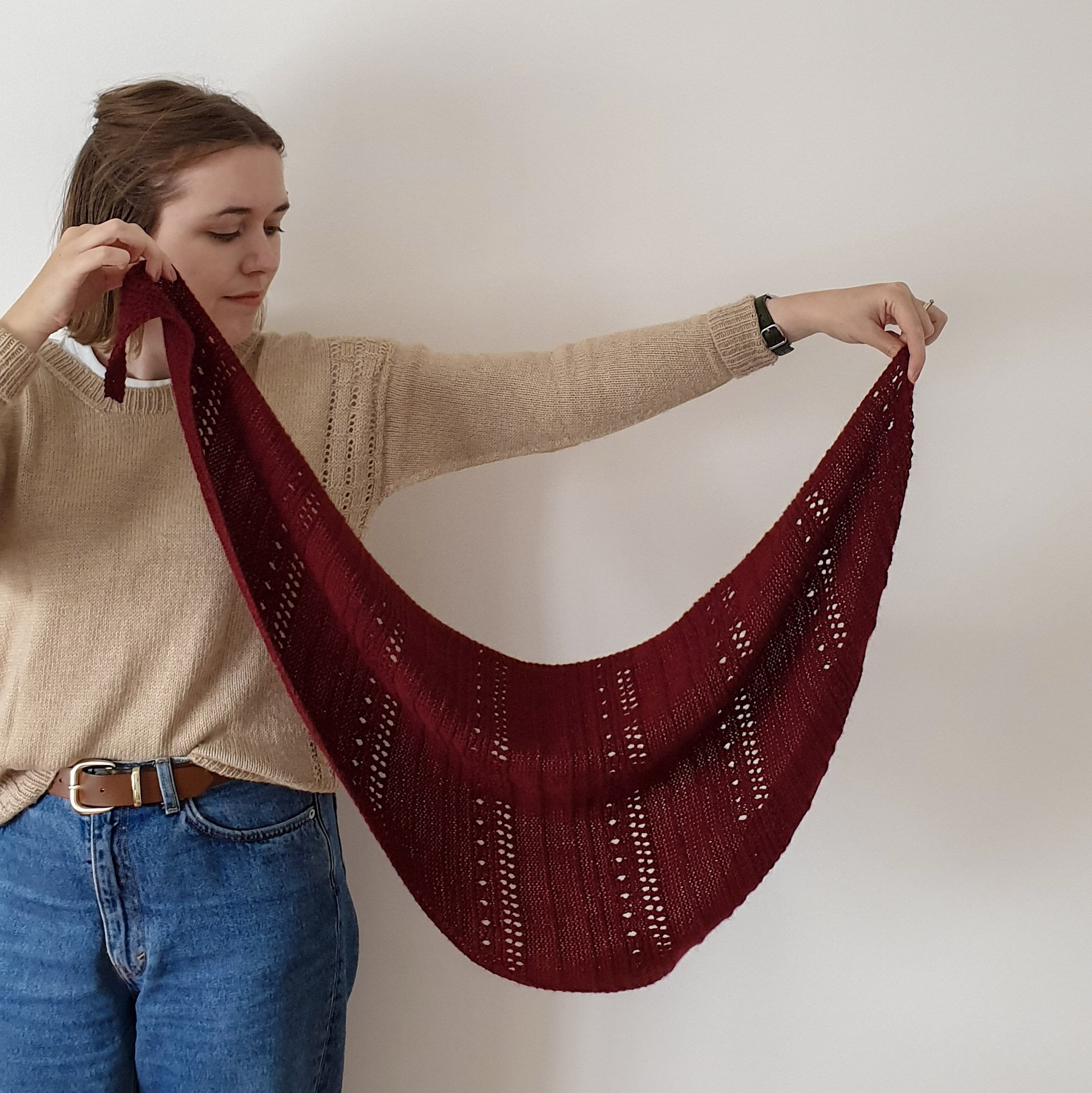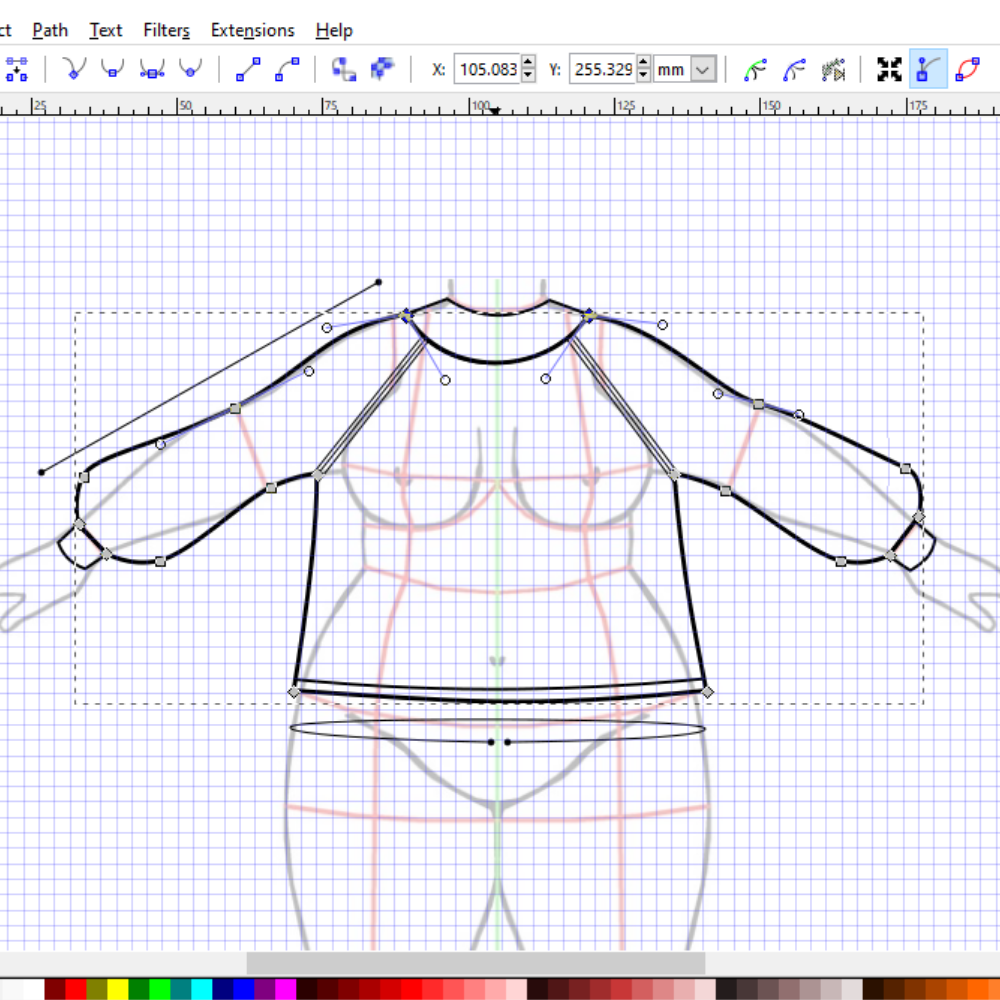A Knitting Pattern Designer Reviews Inkscape
Are you looking for a software to help you draw pattern schematics? Inkscape is a free graphics software that is perfect for knitwear designers who don’t want to invest in an expensive programme.
In this review, I’ll walk you through the ways that I use Inkscape, as well as help you to figure out whether it’s suitable for you.
An Alternative to Adobe Illustrator
As a knitwear student, I drew fashion flats (technical garment drawings similar to schematics) using Adobe Illustrator. I have always found them difficult to draw, but you can get great results with practice.
When I started designing knitting patterns, I needed to find a professional (ie. not hand-drawn) way to draw my pattern schematics now that I no longer have access to Adobe Illustrator.
Cue me trying to find affordable alternatives!
Inkscape has solved all my schematic drawing problems. I didn’t expect to find such a fantastic piece of software, completely free. It does everything I need it to do - and way more!
Inkscape definitely has a bit of a learning curve, but after watching some tutorials on YouTube, I got the hang of it relatively quickly.
Is Inkscape for you?
Inkscape is targeted at design professionals and hobbyists, and is a seriously good alternative to Adobe Illustrator - especially if you’re on a budget!
If you have experience using other graphics programmes or you’re willing to put in a bit of time watching online tutorials about how to use the programme, Inkscape is perfect for you.
Using Inkscape to Draw Schematics
I like to use a flat template as the basis for all my schematic drawings. This template is not intended for fashion illustrations but instead, for technical drawings. It shows the basic shape and proportion of a body so you can draw on top of it.
Inkscape allows you to use layers in your illustrations so I put my template on the first layer and set the opacity to a maximum of 50%. This is so that I can trace on top of the template without getting distracted or confused by it.
Every layer in your drawing can be toggled on and off to become visible and invisible. I can also lock layers in place so that I don’t accidentally drag them out of place. Once I’ve finished tracing over the template, I can just delete the layer with the template.
Like you can with most graphics programmes, I can adjust the width of the lines I’m drawing. This means that I can make my outlines nice and thick whilst the style lines and finer details of the garment have thinner lines. This is the way that I was taught to draw flats at university and it really helps to define the drawing. Because Inkscape creates vector graphics, you can scale your drawing without blurring or pixelating the lines, which can be very handy!
It’s very easy to add measurements to your schematics using the straight line and text tools. I like to add arrow or ball tips to each end of my measurement lines to help define from which point the measurement is taken and Inkscape makes that very straight-forward.
A Learning Curve
If you are very familiar with Adobe Illustrator or other vector graphics programmes, I think you will have no problem with using Inkscape. A lot of the tools and methods are very similar.
However, if you have never used a graphics software or you are very rusty (like me!), there is quite a learning curve with Inkscape. It isn’t very intuitive. For that reason, I recommend that you watch a bunch of YouTube tutorials on Inkscape to help you to familiarise yourself with the programme.
It’s not difficult to learn how to draw pattern schematics using Inkscape, but it will take a fair amount of practice to get comfortable.
Discussion
Do you have any questions about using Inkscape for drawing pattern schematics? Leave them in the comments section below and I’ll do my best to answer them.
Are there any other reviews you’d like me to write for you? Let me know in the comments section!

